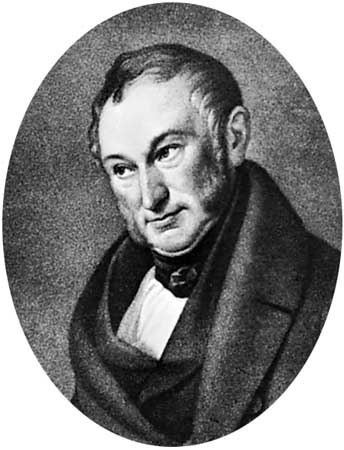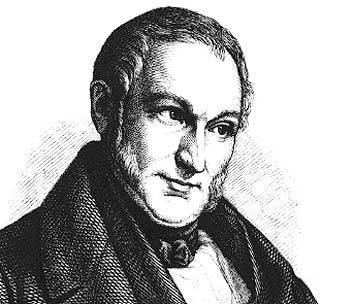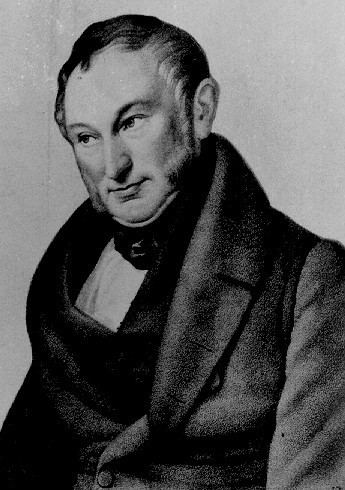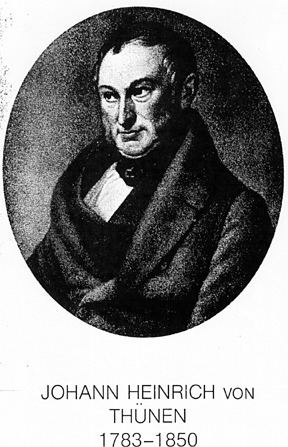Nationality German Influenced Joseph Schumpeter Fields Economics | Name Johann von Books Isolated state Role Economist | |
 | ||
Spouse Helena Sophia Johanna Berlin (m. 1806) Similar People Joseph Schumpeter, Leon Walras, Carl Menger, Eugen Bohm von Bawerk, Friedrich von Wieser | ||
Died 22 September 1850 (aged 67) Tellow in present-day Rostock Alma mater University of Rostock | ||
2- Localisation agricole: Johann Heinrich Von Thünen
Johann Heinrich von Thünen (24 June 1783 – 22 September 1850), sometimes spelt Thuenen, was a prominent nineteenth century economist and a native of Mecklenburg-Strelitz in northern Germany.
Contents
- 2 Localisation agricole Johann Heinrich Von Thnen
- Johann Heinrich von Thnen Wikipedia audio article
- Thnens model of agricultural land
- The Thnen rings
- Natural wage
- Weaknesses and criticism
- References
Johann Heinrich von Thünen | Wikipedia audio article
Thünen's model of agricultural land

Thünen was a Mecklenburg landowner, who in the first volume of his treatise The Isolated State (1826) developed the first serious treatment of spatial economics and economic geography, connecting it with the theory of rent. The importance lies less in the pattern of land use predicted than in its analytical approach.

Thünen developed the basics of the theory of marginal productivity in a mathematically rigorous way, summarizing it in the formula in which

where R = land rent; Y = yield per unit of land; c = production expenses per unit of commodity; p=market price per unit of commodity; F = freight rate (per agricultural unit, per mile); m=distance to market.
Thünen's model of agricultural land, created before industrialization, made the following simplifying assumptions:


The use which a piece of land is put to is a function of the cost of transport to market and the land rent a farmer can afford to pay (determined by yield, which is held constant here).
The model generated four concentric rings of agricultural activity. Dairying and intensive farming lies closest to the city. Since vegetables, fruit, milk and other dairy products must get to market quickly, they would be produced close to the city.
Timber and firewood would be produced for fuel and building materials in the second ring. Wood was a very important fuel for heating and cooking and is very heavy and difficult to transport so it is located close to the city.
The third zone consists of extensive fields crops such as grain. Since grains last longer than dairy products and are much lighter than fuel, reducing transport costs, they can be located further from the city.
Ranching is located in the final ring. Animals can be raised far from the city because they are self-transporting. Animals can walk to the central city for sale or for butchering.
Beyond the fourth ring lies the wilderness, which is too great a distance from the central city for any type of agricultural product.
Thünen's rings proved especially useful to economic history, such as Fernand Braudel's Civilization and Capitalism, untangling the economic history of Europe and European colonialism before the Industrial Revolution blurred the patterns on the ground.
In economics, Thünen rent is an economic rent created by spatial variation or location of a resource. It is 'that which can be earned above that which can be earned at the margin of production'.
The Thünen rings
In his theory of "The Isolated State", he started out from Adam Smith's idea of "economic man": that the farmer is expected to maximize his profit ("economic rent") from his farmland. Thünen, as a landlord, knew that such returns depends on an optimal use of the land surfaces and the transport costs. In concentrating on the effects of these two variables on profits, removal of other factors results in a homogeneous – and isolated – state: A circular, completely undilating plane with a single, dominant market in the center and no interactions with the outside. The economy in the surrounding rural area would have to rearrange itself according to economic behavior in such a way that each industry brings optimal profit in:
Transport cost depends on the distance from the market and different kind of products. The gain from farming per unit area (vocational rent) decreases with increasing distance from the market. The minimum price of a commodity is calculated by vocational rent, transport costs and fixed production costs – the profit is then the difference between the costs and the fixed market price.
Locational rent, a term used by Thünen in his argument, is to be understood as the equivalent to land value. It corresponds to the maximum amount a farmer could pay for using the land, without making losses. The location rent is given by the following equation:
where the variables are defined as follows:
Take the locational rent of a product with a yield of 1,000
Thünen concluded that the cultivation of a crop is only worthwhile within certain distances from the city: beyond that, either the cost of the land becomes too high, with increasing distances transport costs also increase, or, if there is another product having greater yield or lower transport costs. After a distance from the market (the city) the production of a crop becomes unprofitable, either because its profits drop to zero or the profits earned by other crops are higher, as von Thünen calculated them for products having different intensities (cattle, wood, grain, eggs, milk, etc.): For each product there is a certain distance from the city where its production would be worthwhile. Since Thünen referred transport costs directly to the market ("Luftlinie"), circular land use zones arises - the Thünen rings.
The farmers of these products compete against each other, plant their crops concentrically around the market according to the locational rent curves of their own crops. Products having low yields with high price and high transport costs relative to its weight or distance due to its weight, will have higher locational rent close to the market than a product having lower transport costs. Locational rent is the highest possible amount one will pay for the use of the land for a certain cultivation, and is a relative indicator of competitiveness of it in the market.
Natural wage
In the second volume of his great work, The Isolated State, Thunen developed some of the mathematical foundations of marginal productivity theory and wrote about the Natural Wage indicated by the formula √(AP), in which A equals the value of the product of labor and capital, and P equals the subsistence of the laborer and their family. The idea he presented is that a surplus will arise on the earlier units of an investment of either capital or labor, but as time goes on the diminishing return of newer investments will mean that if wages vary with the level of productivity those that are early will receive a greater reward for their labor and capital. But if wage rates were determined using his formula, thus giving labor a share that will vary as the square root of the joint product of the two factors, A and P.
This formula was so important to him that it was a dying wish of his that it be placed on his tombstone.
In The Isolated State he also coined the term Grenzkosten (marginal cost) which would later be popularized by Alfred Marshall in his Principles of Economics.
Weaknesses and criticism
The model was developed in an isolated state and did not take into consideration differences in sites (local physical conditions). It can be modified by relaxing some of the conditions set forth by Thunen:
However, the model tends to hold true in most instances.
The theory may break down somewhat in industrial and post-industrial economies as urban expansion/sprawl occur. For example, modern refrigerators enable perishable products to be transported longer distances. The theory generalizes that there is one mode of transport, which is the boat.
Like many other models in geography, Thünen's model was criticized frequently due to its restrictive nature. The basic conditions of the model, however, could be approximated by slight modifications of the respective reality. The circular pattern, which can be attributed to only one market and excluding transport costs gradients running from the centre, is for example only one of many conceivable geometrical starting situations. If other natural landscapes or transportation routes are present, the land use zones would be stripe-formed. If several markets were present, groups of zones would be formed around each market.
A justified objection against it is the reference to the absence of any productive profit. In Thünen's theory different agricultural uses compete for the optimal location, which results from the product-specific supply/expenditure relation. The competitive power becomes indirectly measurable over locational rent. After deducting production costs and location-specific transport costs, however, nothing more remains of the market profits. The Thuenen model leads to the idea of complete self-sufficiency among farmers.
Thünen's idea of "economic rent" attempted - while ignoring other characteristics - to explain the use of zones controlled solely by economically rational perception. Possible consumers play, finally, the crucial role for the choice of location. At the same time evaluation of all potential locations is released, which leads to a zoning of the possible offers. This simply developed space restaurant model reacts however sensitively to changes of the space overcoming costs. It possesses however due to its universality nevertheless a high value within geographical questions and methodology.
